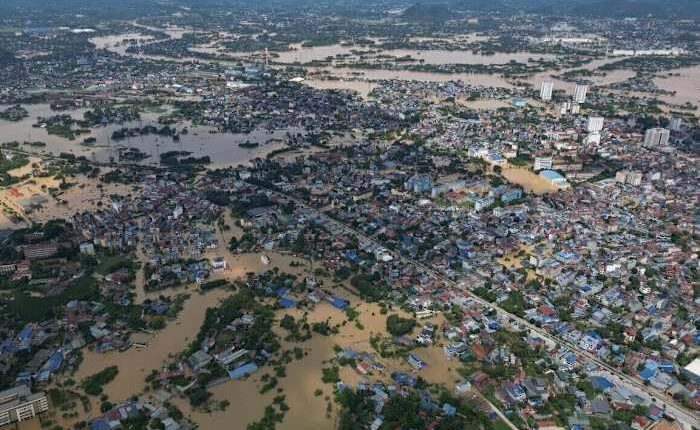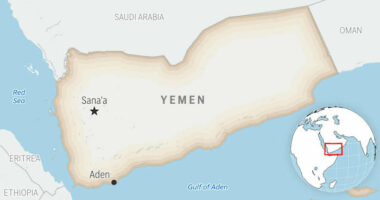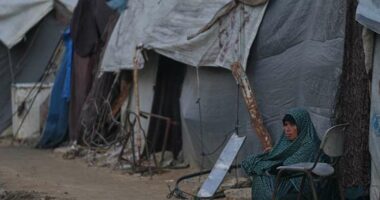Share this @internewscast.com

HANOI – In response to a year marked by severe storms that have devastated landscapes and inundated urban areas, Vietnam is reconsidering its flood management strategies.
As the nation faces increasingly frequent climate extremes, Vietnam is channeling billions into innovative solutions such as mapping flood-prone regions and developing “sponge cities” that can naturally absorb and release water. Under a comprehensive national plan extending to 2030, the government has committed over $6 billion to establish advanced early-warning systems and relocate vulnerable communities to safer areas.
In cities like Vinh, located in central Vietnam, these strategies are beginning to take form. The city is enhancing its drainage systems, creating flood basins, and transforming riverbanks into green spaces that can effectively manage excess water following heavy rainfall.
The urgency of these initiatives has been highlighted by this year’s relentless storms—Ragasa, Bualoi, Matmo—each leaving a trail of destruction. Unprecedented levels of rainfall have turned streets into rivers and triggered landslides, leaving little time for recovery between each storm event.
This week, as Typhoon Kalmaegi loomed, experts warned of its potential impact, suggesting it may not be the last of such severe weather events. This situation offers a glimpse into Vietnam’s climate future, where warmer oceans give rise to storms that intensify rapidly, last longer, and bring heavier downpours, disproportionately affecting the most impoverished communities.
“Vietnam and its neighboring countries are at the forefront of climate change challenges,” stated Benjamin Horton, an earth science professor at City University of Hong Kong.
Climate change is reshaping Vietnam’s storm season
Scientists say the succession of storms battering Vietnam is not a fluke but part of a broader shift in how storms behave on a warming planet. Vietnam usually faces about a dozen storms a year, but the 2025 cluster was a “clear signal” of global warming, said Horton.
Ocean waters are now nearly 1 degree Celsius (33.8 degrees Fahrenheit) warmer than before the industrial era. So storms carry more moisture.
The economic toll has been severe for Vietnam, a developing country that wants to become rich by 2045. Floods routinely disrupt farming, fisheries, and factories — the backbone of its economy. State media estimate extreme weather has cost the country $1.4 billion in 2025.
Vietnam estimates it will need to spend $55 billion–$92 billion in this decade to manage and adapt to the impacts of climate change.
Vietnam’s cities aren’t built for climate shocks
About 18 million people, nearly a fifth of Vietnam’s population, live in its two biggest cities, Hanoi and Ho Chi Minh City. Both are on river deltas that once served as natural buffers against flooding. But as concrete spread over wetlands and farmlands, the cities lost their capacity to absorb downpours.
Flooding in Hanoi in October lingered for nearly a week in some neighborhoods. The city of over 8 million has outgrown its infrastructure and its colonial-era drainage system failed as streets turned into brown canals. Motorbikes sputtered in waist-deep water and the Red River’s levees were tested.
Vegetable seller Dang Thuan’s home flooded knee-deep, spoiling her stock. Her neighborhood used to have several ponds, but they were filled in to build houses and roads. Now the water has nowhere to go.
“We can’t afford to move,” she said, “So every time it rains hard, we just wait and hope.”
In 1986-1996, the decade coinciding with ‘Doi Moi’ economic reforms that unleashed a construction boom, Hanoi lost nearly two-thirds of water bodies in its four core urban districts, according to a study by Kyoto University’s Center for Southeast Asian Studies.
Between 2015 and 2020, it lost water bodies spanning the area of 285 soccer fields, state media have reported.
More than three-quarters of Hanoi’s area — including much of its densely populated core — is at risk of flooding, according to a 2024 study. Flooding in the city can’t be solved by building more, said Hong Ngoc Nguyen, lead author of the study and an environmental engineer at the Japanese consultancy Nippon Koei.
“We can’t control the water,” she said, pointing to Singapore’s shift from concrete canals to greener riverbanks that slow and hold stormwater instead of rushing it away.
A global problem with lessons in nature
The idea of designing cities to “live with water” is gaining traction globally, including in Vietnam.
City officials and residents in India’s Bengaluru are working to save the city’s remaining lakes, while Johannesburg in South Africa is trying to restore its Jukskei River.
Vietnam’s recent floods have sparked a wider conversation about how cities should deal with storms.
The former director of the National Institute of Urban and Rural Planning, Ngo Trung Hai, told the state-run newspaper Hanoi Times that the city must learn to live with heavy rainfall and adopt long-term strategies. European business associations have urged Vietnam’s financial capital Ho Chi Minh City to adopt a “sponge city” approach.
Real estate developers have faced criticism in state media for improper building practices, such as building on low-lying land or roads unconnected to storm sewer systems and treating water bodies as “landscape features” rather than ways to drain storm water.
Some of Vietnam’s biggest property developers have begun to adapt. In the coastal tourism hub of Nha Trang, the Sun Group is building a new township modeled as a “sponge city” with wetlands covering 60 hectares (148 acres), designed to store and reuse rainwater to reduce flooding and absorb heat.
City planners must account for future climate risks, said Anna Beswick, who studies climate adaptation at the London School of Economics.
“If we plan based on past experience, we won’t be resilient in the future,” she said.
—
The Associated Press’ climate and environmental coverage receives financial support from multiple private foundations. AP is solely responsible for all content. Find AP’s standards for working with philanthropies, a list of supporters and funded coverage areas at AP.org.
Copyright 2025 The Associated Press. All rights reserved. This material may not be published, broadcast, rewritten or redistributed without permission.












